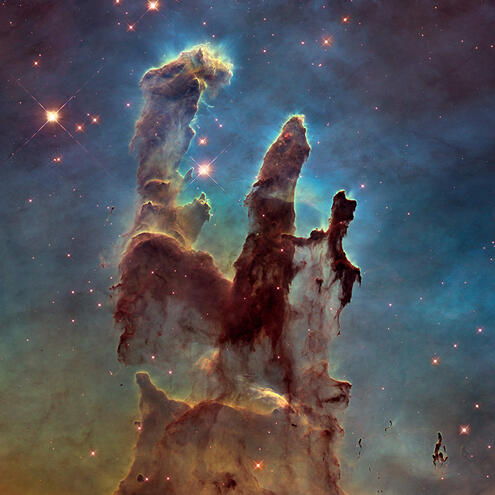


I’m Michael Shara , an astronomer at the American Museum of Natural History. I work with incredible pictures taken by the Hubble Space Telescope . which orbits Earth outside its atmosphere. The Hubble captures crystal-clear pictures of the universe because the blurring effects of the atmosphere doesn’t interfere.

The Hubble Space Telescope
(It's as big as a school bus)
Here are eight pictures from the Hubble.
Can you guess what they are?

Look at these colorful ribbons. What do you think they are?
entrance into a wormhole
streams of radiation from galaxies forming
glowing gas from an exploding star
Image Credits:
Photos: Choice A: courtesy of JPL/Caltech and NASA; Choice B: courtesy of R. Williams, the HDF Team (STScI); and NASA; Choice C: courtesy of B. Whitmore (STScI); F. Schweizer (DTM); and NASA; Choice D: courtesy of L. Ferrarese (Johns Hopkins University) and NASA; Choice E: courtesy of HST, WFPC 2, Jeff Hester and NASA; Choice F: courtesy of Bruce Balick (U. Washington); Vincent Icke (Leiden U. of the Netherlands); Choice G: courtesy of NASA, Voyager 2; Choice H: AURA/NOAO/NSF




 Biodiversity
Biodiversity
 Brain
Brain
 Genetics
Genetics
 Marine BiOLogy
Marine BiOLogy
 MicrobiOLogy
MicrobiOLogy
 PaleontOLogy
PaleontOLogy
 ZoOLogy
ZoOLogy
 AnthropOLogy
AnthropOLogy
 ArchaeOLogy
ArchaeOLogy
 Astronomy
Astronomy
 Climate Change
Climate Change
 Earth
Earth
 Physics
Physics
 Water
Water







